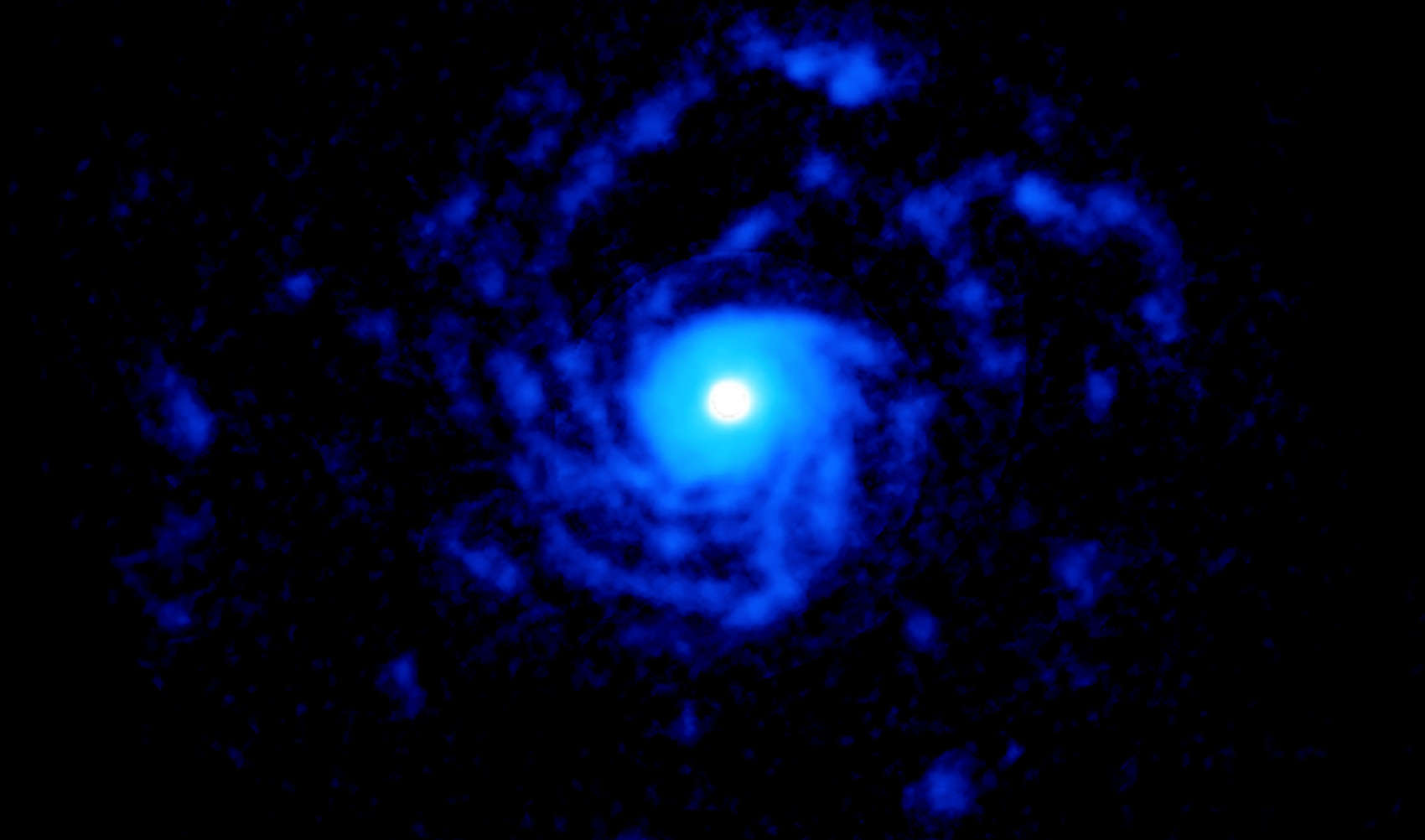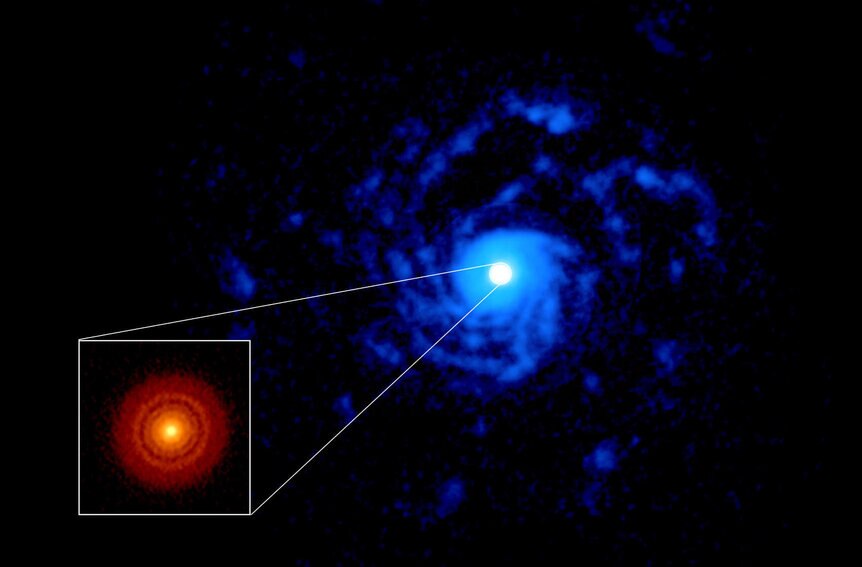Create a free profile to get unlimited access to exclusive videos, sweepstakes, and more!
The mysterious spirals of RU Lupi

There's still a lot we don't understand about how planets form.
There's a lot we do! Clouds of gas and dust collapse, flattening out as they spin to form disks that can be many hundreds of billions of kilometers across. In the center the material becomes the star, and farther out planets begin to form as tiny grains of dust clump together to form fluffy pebbles, then boulders, then mountains… growing in size until they reach planetary status.
I've left out some details, obviously, but we're getting a good handle on the overall picture as well as filling in the gaps.
But there're still some nagging holes in the story that are just now coming to light. For example, close in to the star — out to, say, ten or more billion kilometers — the disk tends to be fairly symmetric, and planets growing in it can carve gaps and rings as their gravity influences the material there.
Outside of that, though, it gets harder to see what's going on. Dust gets faint, and gas is cold. Surveys that take short looks at systems don't see deep enough to get the details needed for more understanding.
And sometimes when a single object is targeted for a deep observation, things only get more confusing. Such is the case for RU Lupi, a young star in the process of making it planetary family. A lovely symmetric dust disk with rings has been seen near the star, but a deep observation using ALMA looking at carbon monoxide gas revealed something unexpected:
Spirals! Five of them, to be exact. The thing is, no one knows why they're there.
RU Lupi is an extremely young variable star, only 500,000 or so years old, located roughly 500 light years away in the constellation of Lupus*. It's been known for many years to have a disk of material around it.
The inset in that image shows that inner disk, which reaches out to about 18 billion kilometers from the star. The material in that disk is orbiting the star only under the influence of the star's gravity; in other words it's moving as you'd expect.
Surrounding that disk is a ring-shaped envelope of material that is not orbiting the way you'd expect it to under only the force of the stars gravity (more on that in a sec). It's more than twice the radius of the inner disk, going out almost 40 billion km. It's not clear what it is. It's redshifted, so it's moving away from us. If it's between us and the star that means material is falling toward the star, and if it's on the other side that means it must be an outflow, blowing away. Aggravatingly, it's not clear which it may be.
Outside that envelope lie the spiral arms. They're clumpy, and it's not easy to know how much mass the clumps have, but the astronomers who made the observations estimate them to be from one-tenth up to 150 times the mass of the Earth. So, planet-mass. But the arms themselves are a mystery.
We've seen spiral structure in protoplanetary or protostar system before. Sometimes it's because a planet is stirring up the dust in the inner disk as that material moves inward. Sometimes it's due to two stars forming in the center, and their gravity drags the gas into a spiral structure.
But no second star is seen here, and this spiral material starts at the envelope and extends outward for at least 150 billion kilometers. That's a helluva long way. It's hard to imagine a planet generating structure on that scale. Perhaps RU Lupi encountered another star that passed by, and the huge disk of material around it got disturbed by that. Sometimes poking a disk gravitationally in such an encounter causes spiral patterns to emerge.
It may be that the arms are feeding material down into the star from great distance. If so, they terminate at the envelope, and the material falling into it is why the envelope isn't orbiting the way you'd expect. It's getting stirred up a bit. I'll note I am totally speculating here. I really don't know, and that's in large part because the astronomers don't know what's going on either. It really is a weird system.
Long story short, I don't have answers. No one does.
… yet. My favorite word in science! There aren't many deep observations like this one, but with each one our knowledge grows. Hopefully at some point a critical mass is reached where the picture snaps into focus, or at least a piece of it does.
And in this case, it makes such a pretty picture! But then baby pictures usually do.
*Variable stars have an odd naming system. In this case, the first one found in a constellation is given the letter R plus the genitive term for the constellation, then S, and so on. Once you hit Z you start over at RR, then RS, RT… so RU Lupi is the 13th variable star found in the constellation of Lupus (the wolf).

![The two stars of the binary system [BHB2007] 11 are in the process of forming, drawing material from the disk surrounding both via a pair of filaments, wound up due to the motion of the stars around each other. Credit: ALMA (ESO/NAOJ/NRAO), Alves et al.](/sites/syfy/files/styles/scale_600/public/alma_binarystars.jpg)


























